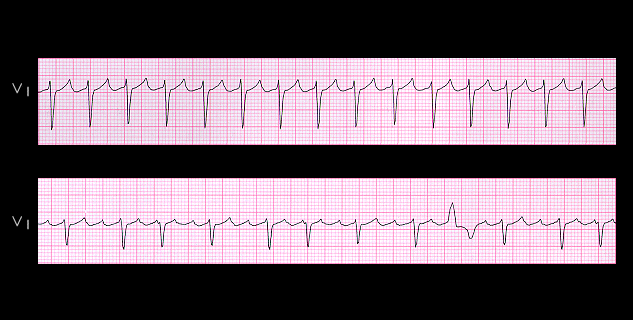
The lower strip is from the ECG taken the next day on the same patient. It now demonstrates varying 3:1 and 2:1 AV block and the flutter waves are more readily seen. The upright wide complex beat in lower strip (4th beat from the left) is probably aberrantly conducted (this was discussed in Chapter 3 and will be mentioned again later in this chapter) although it could also be a ventricular premature beat
